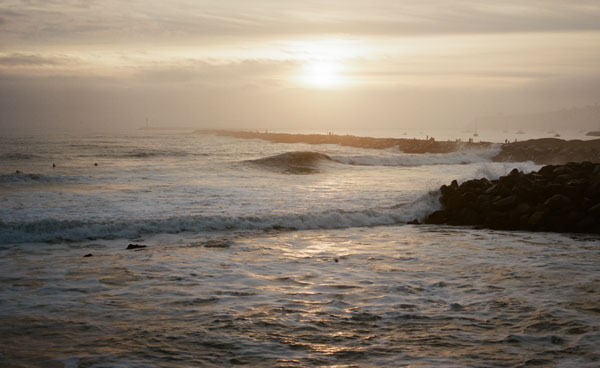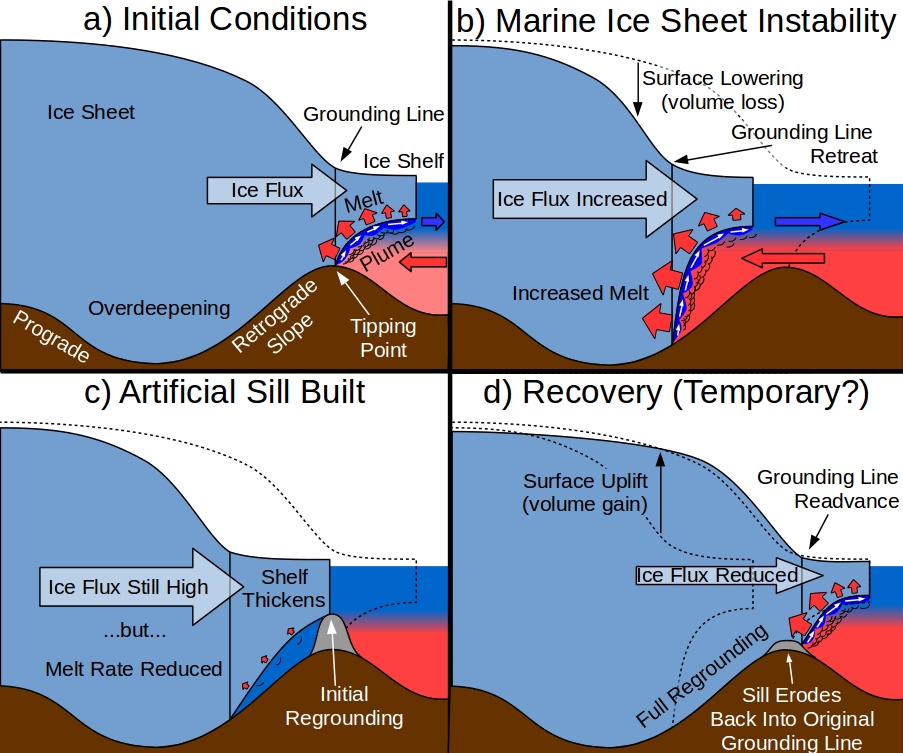Explore Environmental Topics
Adaptation to Water Scarcity in the Western U.S.
A desalination plan to replace a narrowly conceived, costly and destructive groundwater pumping plan.
Water scarcity is a huge problem that grows more serious every day because of unrelenting droughts caused by climate change. We propose a solution to a particular problem of water scarcity in Las Vegas, Nevada, that can serve as an example of two important guidelines that should be applied elsewhere in the U.S. and around the world:
-
Reject short-term, local solutions that are unnecessarily costly and environmentally destructive.
-
Look for regional, system-wide long-term solutions that are less costly, provide benefits to other water users in a region, and are environmentally responsible.
In this case, we propose a desalination plan as an alternative to an existing groundwater pumping plan for Las Vegas that (a) is very expensive ($15.45 billion), (b) would call for the biggest groundwater pumping project in the history of the United States, and (c) would cause severe long-term impact on water resources, threats to protected species, and permanent damage to the ecosystem.
The desalination plan, based on systems thinking, is much less expensive and more environmentally responsible. It involves offering Las Vegas a greater share of water from the Colorado River system in exchange for its providing supplies of desalinated water to Los Angeles. It could also save rate-payers and taxpayers in Nevada about $8 billion.
Many civic and environmental groups stand in opposition to the groundwater plan to bring water to Las Vegas from wells 263 miles away in eastern Nevada. Part of our proposal involves carrying out a public education and advocacy campaign to promote the desalination plan as a replacement for the groundwater plan.
Clean Energy for Desalination and Reducing Water Loss from Evaporation
Systems thinking leads to a plan to keep Hoover Dam as viable source of clean water and energy.
Hoover Dam, built during the Great Depression, should be preserved as (a) a powerful and lasting historic symbol of resilience and determination of Americans and (b) a sustainable source of clean hydroelectric power and water. Unfortunately, Hoover Dam’s capacity to generate and transmit electricity has been reduced because drought has reduced water that is available to turn its turbines.
To bolster the viability of the Hoover Dam system as a source of clean energy and water and to tap underutilized transmission capacity, we propose installing a floating solar photovoltaic (PV) farm on Lake Mead, Hoover Dam’s reservoir, to generate electric power. These floating platforms, covered with solar PV panels, would provide shade for lake water, thus reducing loss of water from evaporation. Less evaporation means more water available both for generating electricity and for meeting water demand from consumers and businesses in Arizona, California, and Nevada.
Energy from this floating solar PV farm could be used for a large variety of purposes. We propose to use this green and renewable power source to power desalination plants on the California Coast to support a water exchange program between Nevada and California. Thus, this proposed project uses systems thinking to identify novel and cooperative ways to put underutilized resources to work to produce clean energy and water.
Transitioning away from Fossil Fuels to Renewable Sources of Energy
Power Plant of the Future: Clean, abundant, and safe energy with no greenhouse gases.
The Energy Island system uses multiple co-located sources of energy to produce clean reliable electricity to the grid. Its development is important for these reasons:
-
Energy from the oceans is tapped in a way that recognizes the enormous potential that is available. The design of Energy Island involves building a large physical structure that will allow tidal currents to be intercepted in a way to produce meaningful amounts of electricity for the grid. That large structure can also be efficiently employed — because of co-location — to provide a support for other means of using renewable energies. This design promises economies of scale and efficiencies that come from sharing physical and electrical infrastructure. The design for Energy Island is built around a critical necessity to supply electricity reliably to consumers without compromising on need to protect the environment.
-
Because multiple sources of renewable energy are co-located on Energy Island, the system can be better optimized for (a) reliability, first priority, and (b) productivity than would be possible if the system were optimized for use of just one energy source. Though the system will vary in its total output, it will be capable of guaranteeing to the grid a certain, specified minimal level of supply. That feature will help to remove one major obstacle to the acceptance of renewable energy sources as replacement for fossil fuels. The system not only provides a highly reliable supply of baseload electricity to the grid; it is also capable of providing an independent extra supply during periods of exceptional demand. Using compressed air for energy storage allows for highly reliable electricity supply while doing so in a way that promises to be cost-effective and has minimal environmental impact.
-
Though not dependent on unproven technologies to be successful, the Energy Island platform can be used to develop promising new technologies.


Stopping Unstoppable Sea Level Rise
Abundant resources are available to stop disastrous sea level rise resulting from melting glaciers.
We are optimistic humans will eventually gain control over climate change; but before that happens, mitigating efforts should be started to deal with global sea level rise – a problem that is already serious and is destined to become much more serious. Levels of carbon dioxide already in the atmosphere will cause global increases in temperature and sea level with devastating consequences – consequences that will occur even if all fossil fuel emissions stopped today.
The greatest long-term threat of rising seas comes not from Greenland but from Antarctica, where 90 percent of the earth’s ice is found. Melting of that ice would raise sea level by tens of meters. Wind-driven currents and tides of carbon dioxide-warmed seawater, impinging on the western coast of Antarctica, penetrate the bases of glaciers that rest partially on rocky coastal lands. Melting of glacial ice from the bottom up reduces friction between the glaciers and land. That allows rapid slipping of the glaciers into the sea, where they melt and contribute to global sea rise.
We propose a project to demonstrate how cooled seawater can be directed to the underside of a glacier in Antarctica to slow its melting and slipping. The project design specifies strategically located injection wells to be (a) drilled downward into spaces underneath a glacier and (b) used to convey cooled seawater down and under the glacier. Given Antarctica is the coldest continent on Earth and unlimited volumes of seawater are available on the coast of Antarctica, it is completely feasible to use energy from the strongest winds on Earth to direct cooled seawater in a strategic manner to protect the underside of a coastal glacier. This approach can be applied to create a strategic bottleneck in a channel underneath a glacier – the channel that would otherwise be traversed by warm seawater before it goes about melting the glacier from below.
Fluid Filtration System
- The FWFC design provides more efficient and complete filter cleaning during the filter cleaning stage. This leads to a more reliable quality of filtered fluid and reduces loss of fluid during filter cleaning.
- The FWFC feature will yield more filtered fluid per hour because more time is spent in an online filtration stage and less time is spent in an offline filter cleaning stage.
- The FWFC granular filter design is simpler, making it less expensive to manufacture than a conventional backwash filter design.
- The simpler FWFC design also allows for easier maintenance, thereby reducing operating costs.
- Increasing the flow rate of the flowing fluid.
- Releasing air bubbles into the flowing fluid.
- Applying mechanical force by vibrating the filtering device.
- Applying a fluctuating electromagnetic field to a filtering layer that is attracted to magnets.

